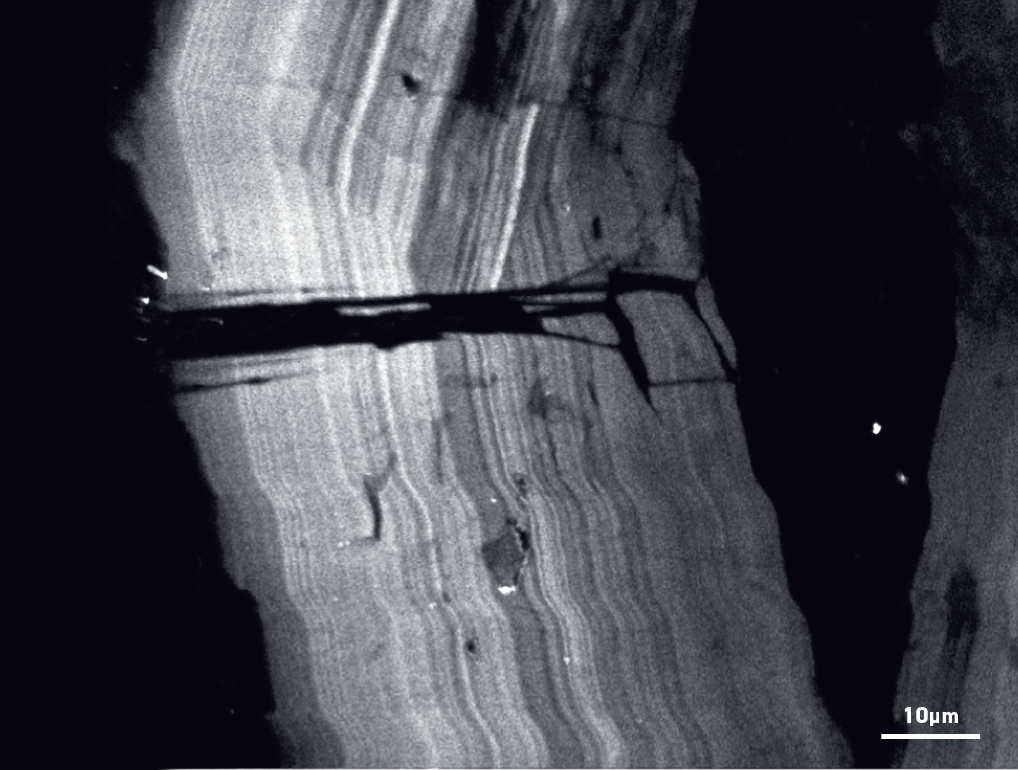To address this gap, Dr Denis Fougerouse and colleagues from Curtin University, the University of Western Australia (UWA) and CSIRO conducted a study of gold-bearing ores from Ghana by using a correlative microscopy approach at Microscopy Australia’s UWA facility, the Centre for Microscopy, Characterisation and Analysis, along with the Australian Synchrotron and Curtin’s own instruments. The results integrate data from the centimetre to the atomic scale including synchrotron X-ray fluorescence microscopy, flagship nano-scale secondary ion mass spectrometry (NanoSIMS) and atom probe microscopy.

NanoSIMS map of the gold distribution in an arsenopyrite mineral from the Obuasi deposit, Ghana.
The combined data built up a picture of how ultra-high grade gold veins are created amongst areas with a much lower gold concentration. They found that a complex chemistry operates, which can solubilise gold in one location and then deposit it close by. As gold-bearing rocks were deformed, nickel-rich fluids moved into cracks replacing some of the gold with nickel. The released gold moved out into the fluid and, depending on the concentration of sulphur, was deposited over distances of ten micrometres to many metres as the fluid moved through the network of cracks to form high-grade ore shoots.
Applying this new data and characterisation workflow to ore minerals opens up new ways to understand processes operating during mineralisation.
July 25, 2017